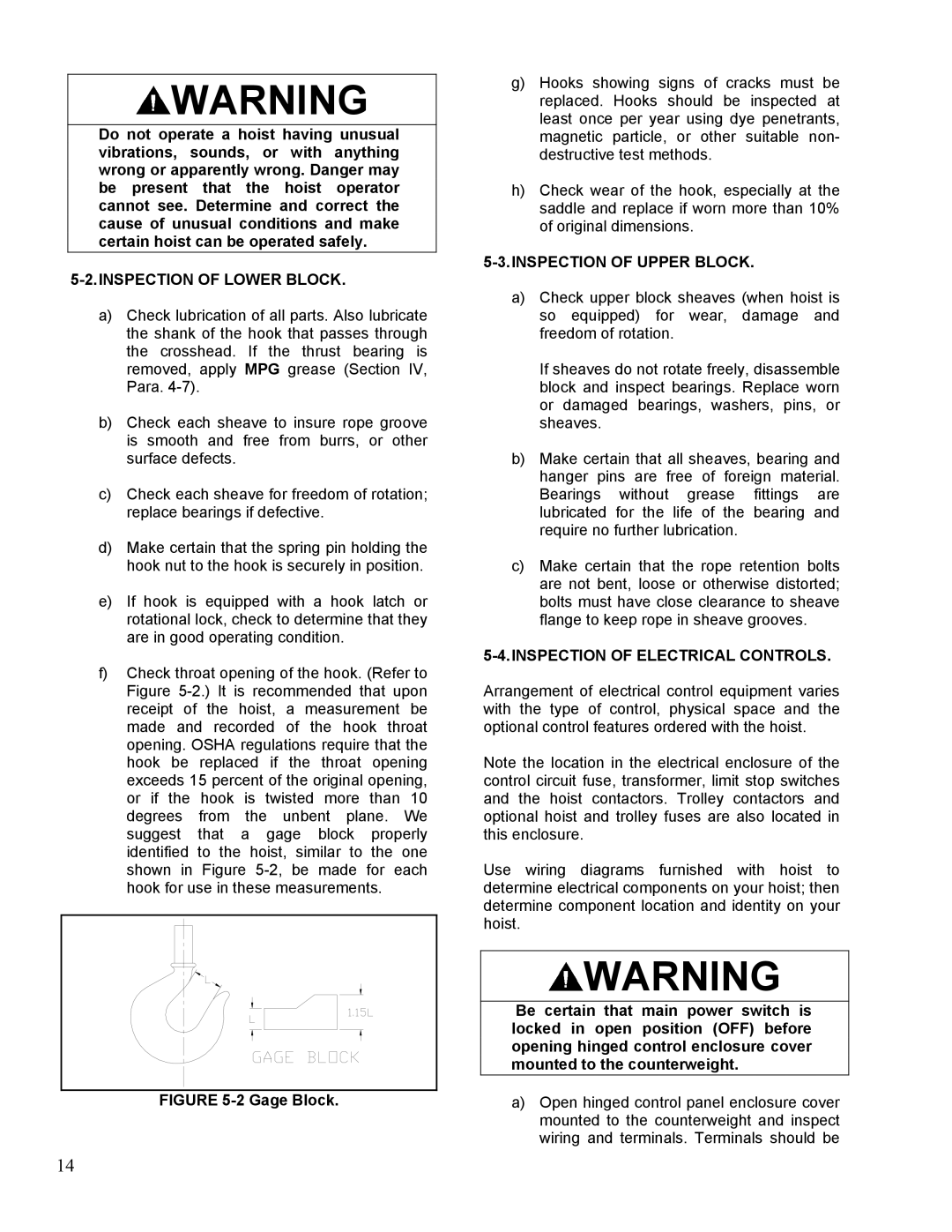
![]() WARNING
WARNING
Do not operate a hoist having unusual vibrations, sounds, or with anything wrong or apparently wrong. Danger may be present that the hoist operator cannot see. Determine and correct the cause of unusual conditions and make certain hoist can be operated safely.
5-2.INSPECTION OF LOWER BLOCK.
a)Check lubrication of all parts. Also lubricate the shank of the hook that passes through the crosshead. If the thrust bearing is removed, apply MPG grease (Section IV, Para.
b)Check each sheave to insure rope groove is smooth and free from burrs, or other surface defects.
c)Check each sheave for freedom of rotation; replace bearings if defective.
d)Make certain that the spring pin holding the hook nut to the hook is securely in position.
e)If hook is equipped with a hook latch or rotational lock, check to determine that they are in good operating condition.
f)Check throat opening of the hook. (Refer to Figure
FIGURE 5-2 Gage Block.
14
g)Hooks showing signs of cracks must be replaced. Hooks should be inspected at least once per year using dye penetrants, magnetic particle, or other suitable non- destructive test methods.
h)Check wear of the hook, especially at the saddle and replace if worn more than 10% of original dimensions.
5-3.INSPECTION OF UPPER BLOCK.
a)Check upper block sheaves (when hoist is so equipped) for wear, damage and freedom of rotation.
If sheaves do not rotate freely, disassemble block and inspect bearings. Replace worn or damaged bearings, washers, pins, or sheaves.
b)Make certain that all sheaves, bearing and hanger pins are free of foreign material. Bearings without grease fittings are lubricated for the life of the bearing and require no further lubrication.
c)Make certain that the rope retention bolts are not bent, loose or otherwise distorted; bolts must have close clearance to sheave flange to keep rope in sheave grooves.
5-4.INSPECTION OF ELECTRICAL CONTROLS.
Arrangement of electrical control equipment varies with the type of control, physical space and the optional control features ordered with the hoist.
Note the location in the electrical enclosure of the control circuit fuse, transformer, limit stop switches and the hoist contactors. Trolley contactors and optional hoist and trolley fuses are also located in this enclosure.
Use wiring diagrams furnished with hoist to determine electrical components on your hoist; then determine component location and identity on your hoist.
![]() WARNING
WARNING
Be certain that main power switch is locked in open position (OFF) before opening hinged control enclosure cover mounted to the counterweight.
a)Open hinged control panel enclosure cover mounted to the counterweight and inspect wiring and terminals. Terminals should be
